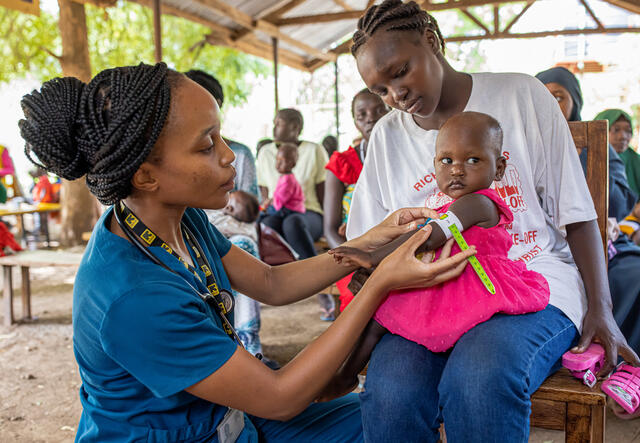
How is the IRC responding to East Africa’s worst drought in 40 years?
With 20 million people at risk of hunger in Somalia, Ethiopia and Kenya, the IRC is on the ground providing essential support to those in need.

With 20 million people at risk of hunger in Somalia, Ethiopia and Kenya, the IRC is on the ground providing essential support to those in need.
Families living in Somalia, Ethiopia and Kenya are struggling to put food on the table as they experience severe drought combined with food shortages caused by ongoing conflict in Ukraine. Right now, 20 million people are at risk of going hungry.
Long before the current drought, our teams in East Africa have been on the ground helping families build resiliency. East Africa is home to some of the IRC’s longest-running programs, with operations in Somalia spanning 40 years, Kenya 30 years and Ethiopia 20 years. Today, over 2,500 staff members in the region support families with water, sanitation and hygiene, health care, nutrition services and emergency cash support.
Travel with us across three countries in East Africa to see how our teams are working on the ground to support these children and families who need us now more than ever.
First, let’s meet our teams in Somalia.

Building resilience to recurring shocks and stresses is essential to helping children and families in East Africa survive natural disasters like droughts, locust infestations and a global pandemic.
Eighty-year-old Hawo Hashi Mohamud knows the impact of Somalia’s below-average rains all too well. Drought means the loss of their only source of income: their animals.
“Most of the people here are herders,” says Hawo. “They have less pasture for their livestock and their animals become weaker and less productive.”
The IRC has reached 280,000 Somalis like Hawo each year. As a member of the Building Resilient Communities in Somalia consortium, we have launched programmes to help families—especially female-led ones—build financial resilience for when emergencies strike. We’ve transferred emergency cash to 1,400 Somalis so that they can meet their basic needs, provided entrepreneurship training and start-up grants to new business owners, and trained two village savings and loans groups to ensure remote communities are financially prepared for when a crisis strikes.
Next, let’s meet our teams in Ethiopia to see how they are helping families access the most basic life necessity: water.

The IRC reaches over 3.2 million Ethiopians each year with vital support, including emergency water trucking, a lifesaving intervention for children and families. When water sources are cut off or run dry, our trucks carry 5,300 gallons of water to the affected villages, ensuring families receive water every three days.
IRC emergency rapid response manager Niman Arab is proud of the IRC's work reaching some of Ethiopia's most remote villages with water and sanitation services. “Our team has witnessed the severity of the drought and how it affects the property of each member of the community," he says. "One woman we spoke with used to have 200 goats before the drought, and now she only has 20 left."
Lastly, let’s take a look at our teams in Kenya working around the clock to care for children suffering from malnutrition.

In Kenya, where 941,000 children under the age of 5 are acutely malnourished, our teams have delivered critical care to over 300,000 people a year, including nutrition support for malnourished children.
Dr. Sila Monthe, an IRC health manager, has witnessed what many East African families are facing during this drought as her team works day and night at a refugee camp in Kenya that serves nearly 200,000 refugees from Somalia, Ethiopia and other crisis-affected countries.
“Families are reducing the number of times they eat in a day, so they say they will only take supper,” she says. “They are prioritising the children, so the adults are not eating…. Some of them choose to buy less nutritious food, less expensive food, just something that can fill the stomach.”
The IRC offers both inpatient and outpatient therapeutic feeding. “The child should be gaining weight daily,” says Dr. Sila. “Every week they come back, we take their weight and we repeat [their measurements].”
After treatment, Dr. Sila and her team follow up with the children regularly to ensure they are healthy and receiving the nutrients they need.
One of the best ways you can help our teams from afar is doing exactly what you’re doing now: stay informed about what’s happening in these countries—and donate!
Our teams work across more than 40 crisis-affected countries because generous supporters like you choose to fuel our work year after year.
Take a deeper dive into why millions of people across East Africa are facing extreme hunger: Learn more by reading this article.